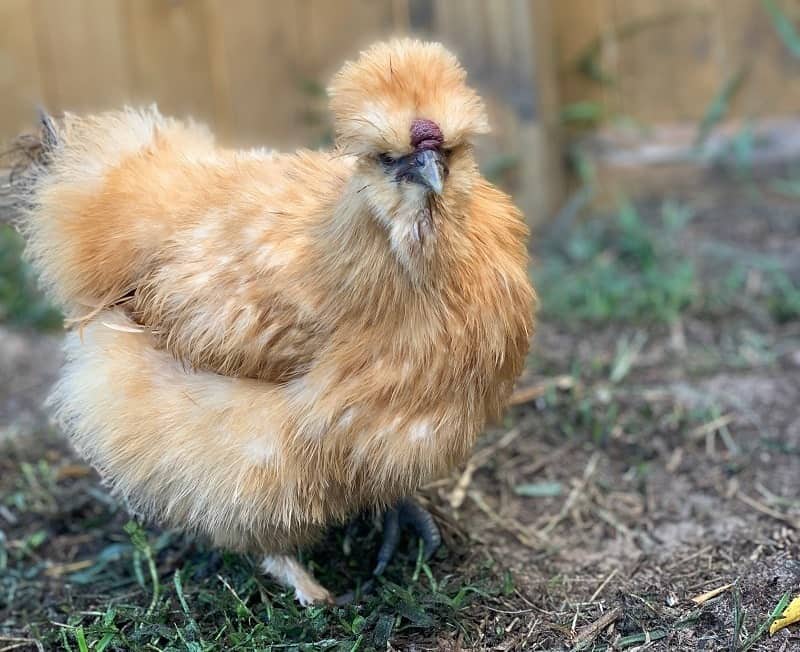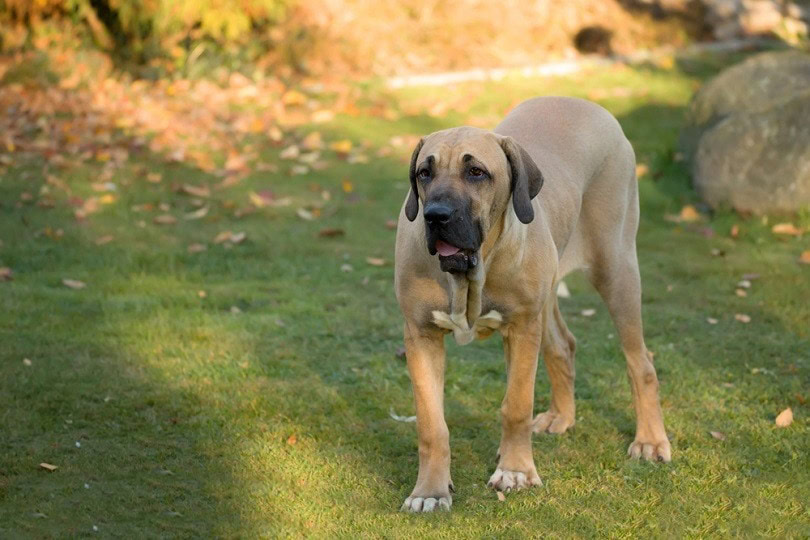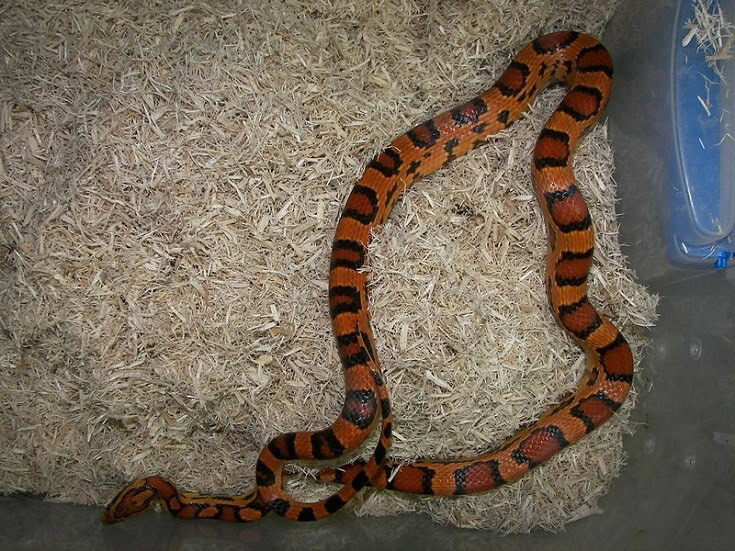Click to Skip Ahead
| Length: | 3.5–4 inches |
| Weight: | 0.5–1.5 ounces |
| Lifespan: | 1–3 years |
| Colors: | Ash gray to dark brown with stripes |
| Temperament: | Easy to tame, sociable |
| Best Suited For: | First-time hamster owners, families without small children |
If you’re looking for a hamster with the size and sociability of a Campbell’s Russian and the personality and temperament of a Syrian hamster, you’re in luck. The Dwarf Winter White hamster is perfect for you.
They are the best of both worlds when it comes to hamsters. They’re docile like Syrian hamsters, but they’re not nearly as territorial. They do well with other hamsters like the Campbell’s Russian but without the extra time needed to tame them.
With their seasonal changing coat, the Dwarf Winter White Russian hamster really is like getting two hamsters in one!

Dwarf Winter White Hamsters – Before You Bring One Home…
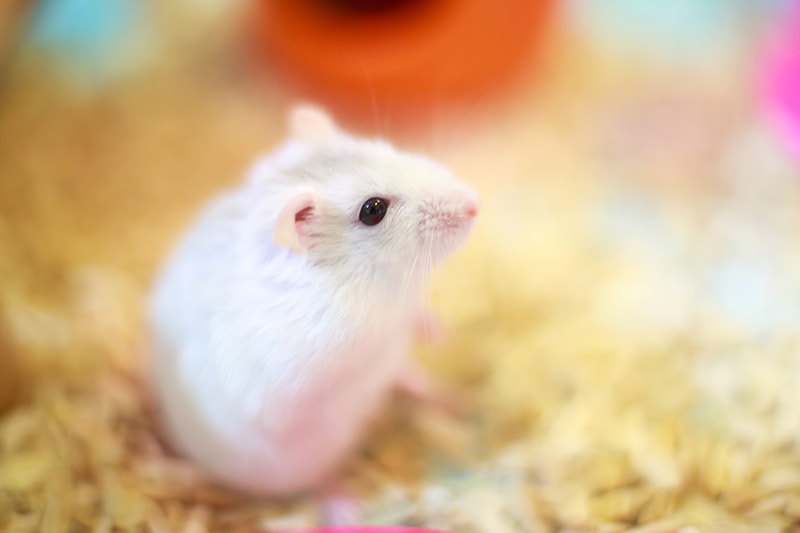
Are you looking for a Dwarf Winter White hamster but are having difficulty finding one? You may have already run across quite a few without even knowing it! Winter Whites have no accepted common name. They are referred to by many names, including Russian dwarf hamsters, Siberian hamsters, and Djungarian hamsters.
This can make it challenging when searching for a purebred Winter White. Your best bet is to contact a certified hamster breeder.
What’s the Price of Dwarf Winter White Russian Hamsters?
Hamsters are among the cheapest pets that you can find. You can pick up a single Dwarf Winter White Russian hamster for $5–$15 and a pair for $15–$20.
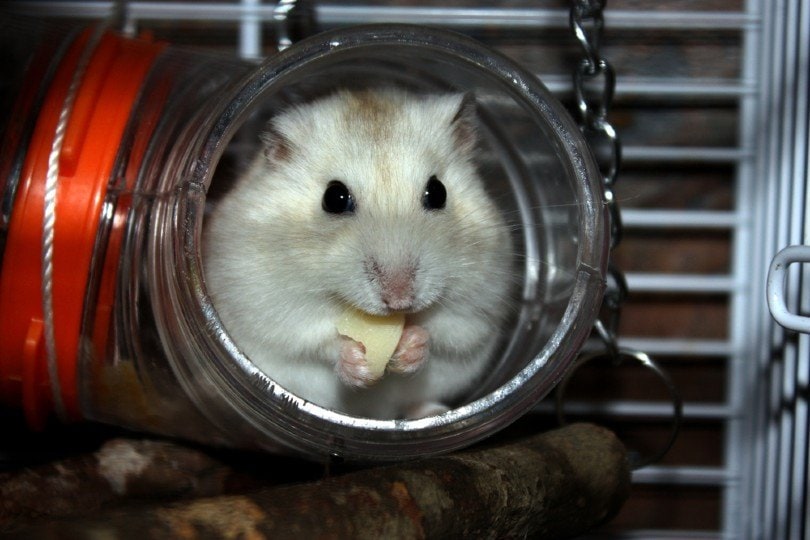

3 Little-Known Facts About Dwarf Winter White Russian Hamsters
1. True Winter White Hamsters Can Be Hard to Find
True Winter White hamsters are rare because of the following reasons:
- Winter White hamsters are often confused for Campbell’s Russian dwarf hamsters.
When it’s summertime, a Winter White can definitely come across as a Campbell’s Russian at first glance. The untrained eye may not be able to tell the difference at all.
- Winter White hamsters can interbreed between hamster species.
This breed (along with Campbell’s Russian dwarf hamsters) can interbreed with other species of similar hamsters. Finding a purebred Winter White can be difficult. That’s why it’s best if you go to a Winter White breeder instead of to your local pet shop.
2. Their Coat Changes Color Depending On the Season
One of the aspects that makes Winter White hamsters so special is that their coat actually changes color with the seasons. In the wild, their white coating provides camouflage from predators against the snow. However, if your hamster is not exposed to seasonal light, they may not change colors.
3. They Can Breed Year-Round
Winter White hamsters do not have a breeding season. Females enter heat every four days and can get pregnant again on the same day they give birth. If you have a male and a female, you need to be very careful lest you find yourself swarmed with baby hamsters.

Temperament & Intelligence of the Dwarf Winter White Hamster
Winter Whites are full of personality and are some of the most vocal hamsters around. You’ll often hear them squeaking “angrily” at one another and causing a ruckus. However, that’s doesn’t mean they’re necessarily mad. That’s just their way of communicating. But if you hear prolonged squeaks or ones that are more pronounced, then check in on them. It could be a sign of bullying.
Winter Whites are also known to be the big babies of the hamster world. They’ll noisily complain over some of the smallest issues, but it’s all just part of their unique personality.
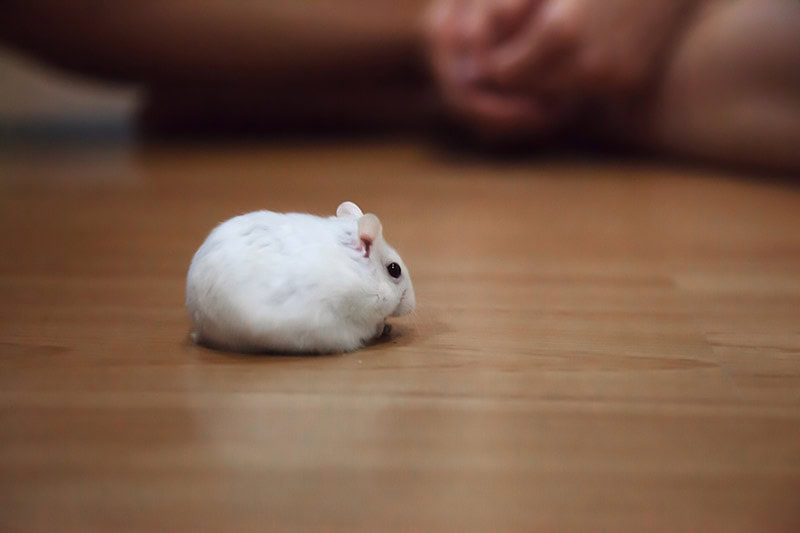
Are These Hamsters Good for Families? 👪
Dwarf Winter White hamsters are very good for families with older kids. They are much more docile than other dwarf hamsters and don’t nip as much. You’ll just need to take the time to tame them properly, which doesn’t take long. Younger children who have been exposed to hamster care could also do well with Winter Whites.
Does This Breed Get Along with Other Pets?
Hamsters need to stay separated from other animals. However, you can still keep them in the same household. They’re a very social breed and actually do better when paired up. The real trick is making sure that the hamsters get along. The best way to do this is to put them together while they are young, even as early as 5 weeks.
You’ll still see one of them take a more dominant role, but they shouldn’t be fighting to the death.

Things to Know When Owning a Dwarf Winter White Hamster:
Owning Dwarf Winter White Russian hamsters can be a really fun experience. After you learn the basics, they’re simple to care for.
Food & Diet Requirements
When it comes to properly feeding your hamster, you should use specialized hamster pellets. They are designed with hamsters in mind. It’s difficult to measure out the small amounts of each vitamin and mineral that your hamster needs, and pellets ensure that your hamster stays fit. However, you can give your Winter White some nice little snacks and treats, such as whole grains and seeds.
Just be sure to avoid raw beans, raw potatoes, almonds, onion, and garlic. Garlic is particularly poisonous to hamsters.

Exercise
Winter White hamsters are active and social critters. They love to run and play, especially with each other. If you end up getting a pair, make sure that their enclosure is large enough to accompany both. You’ll also want to get each of them their own exercise wheels and toys to prevent squabbles.
Despite their active playfulness, avoid multi-story cages and tubular module habitats. They enjoy wide-open spaces where they can run freely. Just make sure they have plenty of bedding material for their burrowing enjoyment.
Training
When it comes to training a Winter White hamster, it’s similar to “training” other hamsters. They’re not necessarily trained, but more tamed. They’re much easier to tame than other dwarf hamsters. They are much more docile like their Syrian hamster cousins.
They must be handled gently and slowly, or they may bite you. But once they become familiar with their owners, Winter White hamsters love being pet and snuggled.
Grooming ✂️
Hamsters are among the easiest animals to groom since they take care of themselves. You’ll find your Winter Whites constantly trying to keep themselves clean. However, that’s not to say you can’t give them a nice massage with a soft-bristled brush. They’re sure to enjoy it!
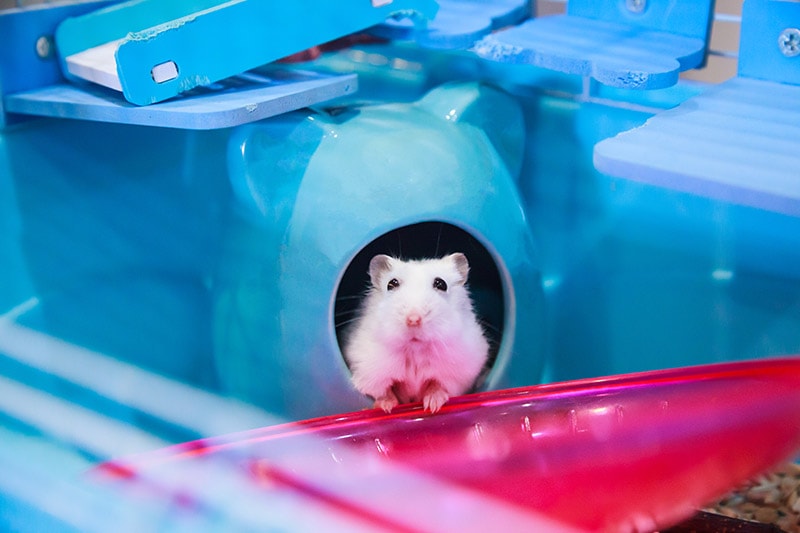
Health and Conditions 🏥
The Dwarf Winter White hamster is a little bit heartier than some of the other Dwarf hamster. For example, experts agree that they are less susceptible to diabetes, unlike the Campbell’s Russian. However, Winter Whites, like other hamsters, are susceptible to tumors.
All hamsters, including Winter Whites, can suffer from a bacterial infection of the small intestine and GI tract called wet tail. This can lead to severe diarrhea, watery discharges, and death. If you notice your hamster’s tail area becoming very wet and muddied, notify your vet immediately.
Because these hamsters are so small, falls from even the slightest of heights can have deadly consequences. That is why we recommend not letting small children handle them. Winter Whites can be skittish and can easily escape smaller hands.
Lastly, mites are common in all hamsters. Fortunately, they’re easy to treat. Usually, you just need to apply a special topical ointment, cream, or dust.
- Fall injuries
- Mites
- Tumors
- Wet tail

Male vs Female
There are very few size differences between male and female Winter Whites, and the males are only slightly larger. The biggest difference between the two is seen in same-sex colonies. The males tend to be much more tolerant of each other, while the females have more petty squabbles.


Final Thoughts
The Dwarf Winter White Russian hamster is a great choice for those interested in caring for dwarf hamsters. They’re more docile than other breeds and easier to tame. They also have fewer health issues than many other dwarf hamsters, and their social nature makes them great, lovable small pets as well.
Featured Image Credit: Vishnevskiy Vasily, Shutterstock






